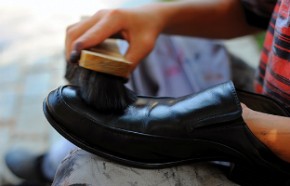On the other side: An electrician shines shoes in Tijuana

Several times each month I walk across the border into Tijuana at the San Ysidro port of entry, the busiest land border crossing in the world, just south of San Diego. I have grown so accustomed to declining requests for my patronage that Hoy no, gracias (“Not today, thanks”) has come to feel to me almost like a pleasantry, a kind of all-purpose salutation.
But one day a man, whose name I never learned, was persistent and persuasive and addressed me confidently in barely accented English as he offered to shine my shoes.
“You can pay me whatever you want,” he said. When I balked, he insisted, “I’ll make them shine like a mirror, man.” He closed the deal with: “I know what I’m doing, I promise.”




